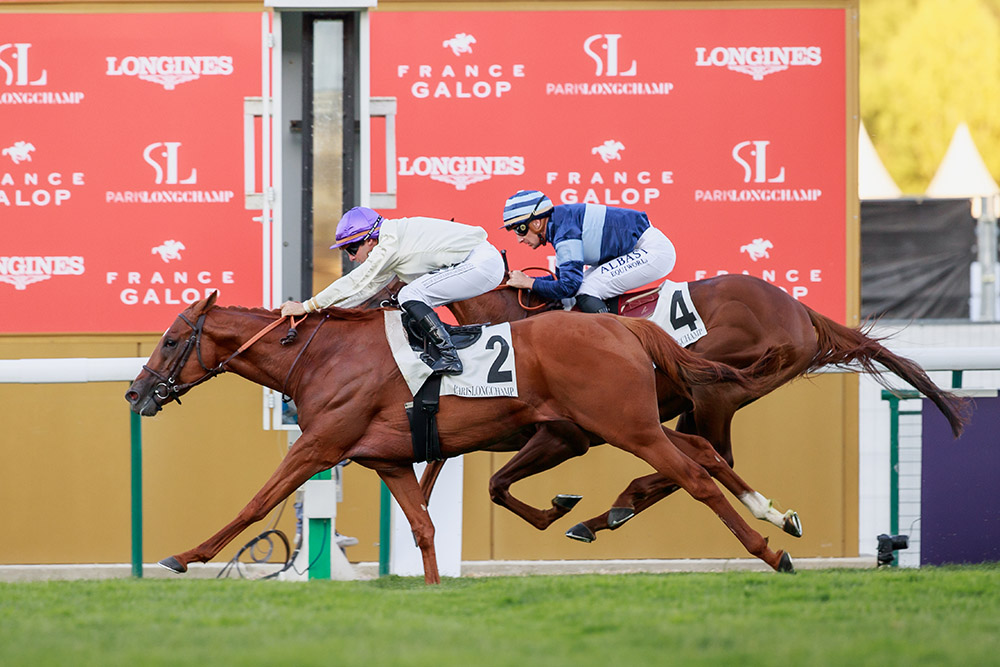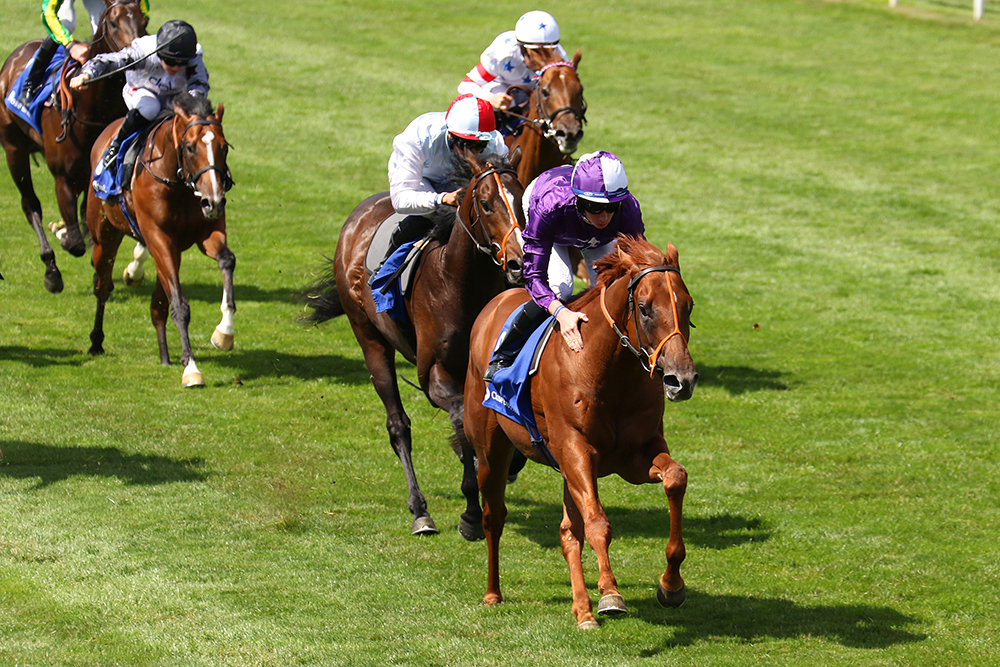John Boyce grew up on a stud farm and is a bloodstock journalist and former editor of Pacemaker and of The Thoroughbred Breeder. He was part of the Darley/Godolphin team from 2001 to 2022 as Group Marketing Head and then Group Head of Research. He is currently a partner in a data analytics company based in London.
Young broodmare sires and their emerging nicks
Trying to identify the next generation of leading broodmare sires is not an easy task, but the benefits of doing so can be substantial. John Boyce searches for clues amongst the current candidates.
There are clear benefits to identifying the next generation of talented broodmare sires as the information usually also informs us about fruitful new partnerships between a sire and broodmare sire. But what are the metrics we should expect from up-and-coming broodmare sires? Well, as broodmare sires are one generation further back in a pedigree than a sire, we cannot expect similar strike rates of Stakes winners. But there have in the past been a few stallions that have posted unbelievably good numbers from their broodmare daughters.
One example I always quote as a standard bearer is the Aga Khan’s Group 1 Prix du Jockey Club winner Darshaan, who benefitted enormously from the presence of Coolmore’s once-in-a-generation sire Sadler’s Wells, a colt Darshaan defeated the day he won France’s most coveted Classic. Darshaan’s daughters produced 232 Stakes winners at a rate of 9.2% from runners. This is a strike rate that not even the vast majority of stallions can achieve with their own progeny, let alone through their daughters. To put the achievement in context, the two most recent champion broodmare sires in Britain and Ireland, Pivotal and Galileo, have scores of 6.4% and 7.7% respectively for their northern hemisphere progeny. And when we segment the best 20% of Darshaan’s mares on pedigree, that strike rate rises to an excellent 15.4% Stakes winners to runners.
In recent years several good broodmare sires have emerged, including the likes of Shamardal and Dansili, both with 6.5% Stakes winners to runners, while Dubai Destination (6.6%) and Raven’s Pass (6.7%) have performed even better. But let’s look at the younger brigade, those that entered stud from 2010 onwards. Let’s be clear, evaluating this younger group now and in ten years’ time may present different pictures for some of them, but others have already made a significant impact.
Numerically speaking, Gilltown’s Sea The Stars is way out in front. His tally of 24 Stakes winners with ten more than the next on the list. Last season was a breakthrough year for Galileo’s half-brother, his daughters All At Sea and Onshore providing him with his first two Group 1 winners in Dubawi’s St Leger winner Eldar Eldarov and Frankel’s son Onesto, the first home in the Grand Prix de Paris. The fact that Sea The Star’s first two Group 1 winners as a broodmare sire are by the two top-class sires of the day is likely to be key to the future success of the Gilltown sire.

Onesto (by Frankel), one of two Group 1 winners in 2022 to feature Sea The Stars as their broodmare sire.
Sea The Stars has only 11 runners so far by Dubawi and three of them – featuring the 118-rated Group 2 winner My Oberon and the 111-rated Soft Whisper – are Stakes winners. That’s a strike rate of 27.3%, nearly 10 points better than Dubawi’s normal output. Stud companions Frankel (two Stakes winners from 12 runners) and Kingman (three from 11) have also posted strong performances with Sea The Stars mares.
Dubawi’s 2,000 Guineas winner Makfi entered stud a year after Sea The Stars and although he didn’t do well enough as a sire to survive in these parts, he has left a very effective group of broodmares behind him. Among the 14 Stakes winners from his daughters are Frankel’s Group 1 Belmont Oaks heroine McKulick, Showcasing’s Group 1 Prix Jean-Luc Lagardere winner Belbeck, plus Group 2 July Stakes winner Tactical (by Toronado) and Kingman’s Group 2 German 2,000 Guineas scorer Fearless Night. It must also be noted here that Makfi has the best strike rate of the group with an excellent 8.3% Stakes winners to runners.
Just as it was on the track, Mastercraftsman is again compelled to play second fiddle to Sea The Stars both as a sire and a broodmare sire. Like his nemesis, Mastercraftsman has sired the dams of two Group 1 winners, but he’s had the added benefit of shuttling to the southern hemisphere where his daughters produced the dual Group 1 winner Loving Gaby (by I Am Invincible) and Almanzor’s Group 1 Victoria Derby winner Manzoice, hence his rather low 2.8% Stakes winner to runner strike rate.
Lope de Vega, meanwhile, has got his broodmare sire career off to a strong start with seven early Stakes winners among his 147 runners. He may not yet have bagged a Group 1 winner, but the son of Shamardal has sired the dam of the ultra-consistent Persian Force, winner of the Group 2 July Stakes and placed at Group 1 level in the Phoenix Stakes, Prix Morny and Middle Park, plus his brother Gubbass, who has the same 108 Timeform rating as his more accomplished younger sibling. Another daughter, Colorada, produced last season’s Group 2 Norfolk winner The Ridler. From a ratings perspective, the best racehorse to date out of a Lope de Vega mare is the young Camelot stayer Sober, rated 113 after his third-place finish in the Group 1 Prix Royal Oak last autumn.

Group 2 July Stakes winner, Persian Force, is by Mehmas out of the Lope de Vega mare Vida Amorosa.
Just like his sire Oasis Dream, Showcasing is also building a solid reputation as a broodmare sire. So far, his daughters have provided the Group 3 Sandy Lane winner El Caballo, by Havana Gold, plus the Group -winning Galileo filly History. And given his burgeoning success as a sire of late, there will be many more well-bred mares in play in the coming years. Perhaps even more noteworthy at this stage are the runners from daughters of another Oasis Dream sire in Arcano, who have produced the Group 1 Middle Park hero Supremacy and also the very promising Roger Varian-trained two-year-old of last year, Sakheer.
LEADING YOUNG BROODMARE SIRES
(Entered stud 2010+ Min 100 Rnrs)
| Name | To Stud | Sire | Rnrs | SWs | % |
| Sea the Stars | 2010 | Cape Cross | 355 | 24 | 6.8 |
| Makfi | 2011 | Dubawi | 169 | 14 | 8.3 |
| Mastercraftsman | 2010 | Danehill Dancer | 282 | 8 | 2.8 |
| Lope de Vega | 2011 | Shamardal | 147 | 7 | 4.8 |
| Showcasing | 2011 | Oasis Dream | 116 | 6 | 5.2 |
| Equiano | 2011 | Acclamation | 101 | 5 | 5.0 |
| Arcano | 2011 | Oasis Dream | 106 | 5 | 4.7 |
| Siyouni | 2011 | Pivotal | 117 | 5 | 4.3 |
| Champs Elysees | 2010 | Danehill | 116 | 4 | 3.4 |
| Le Havre | 2010 | Noverre | 151 | 4 | 2.6 |
New advertised stallions for 2025
Click on any of the new stallions below to go straight to their records

Click below to buy the 2025 book.
Why Advertise Your Stallion
Each Advertised Stallion comprises:
An Overview • Stud Record • Sales Record • Race Record • Pedigree Record
